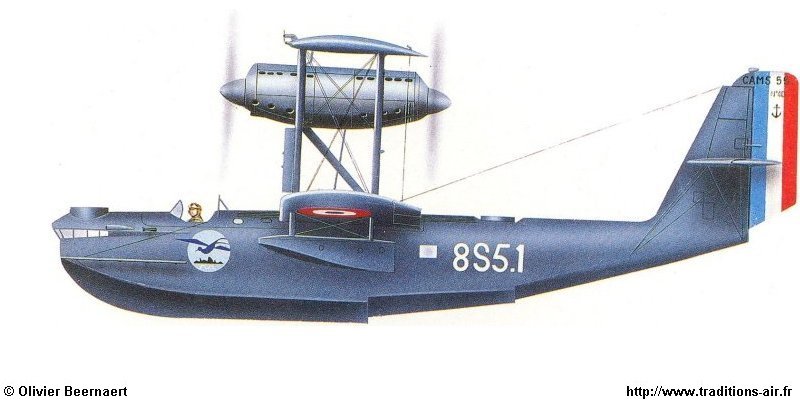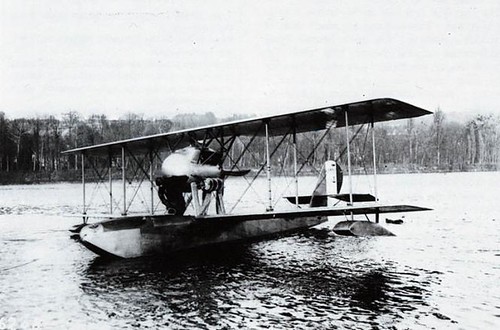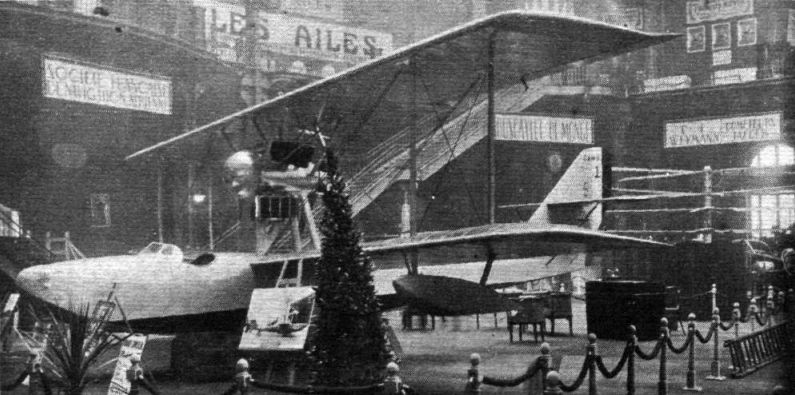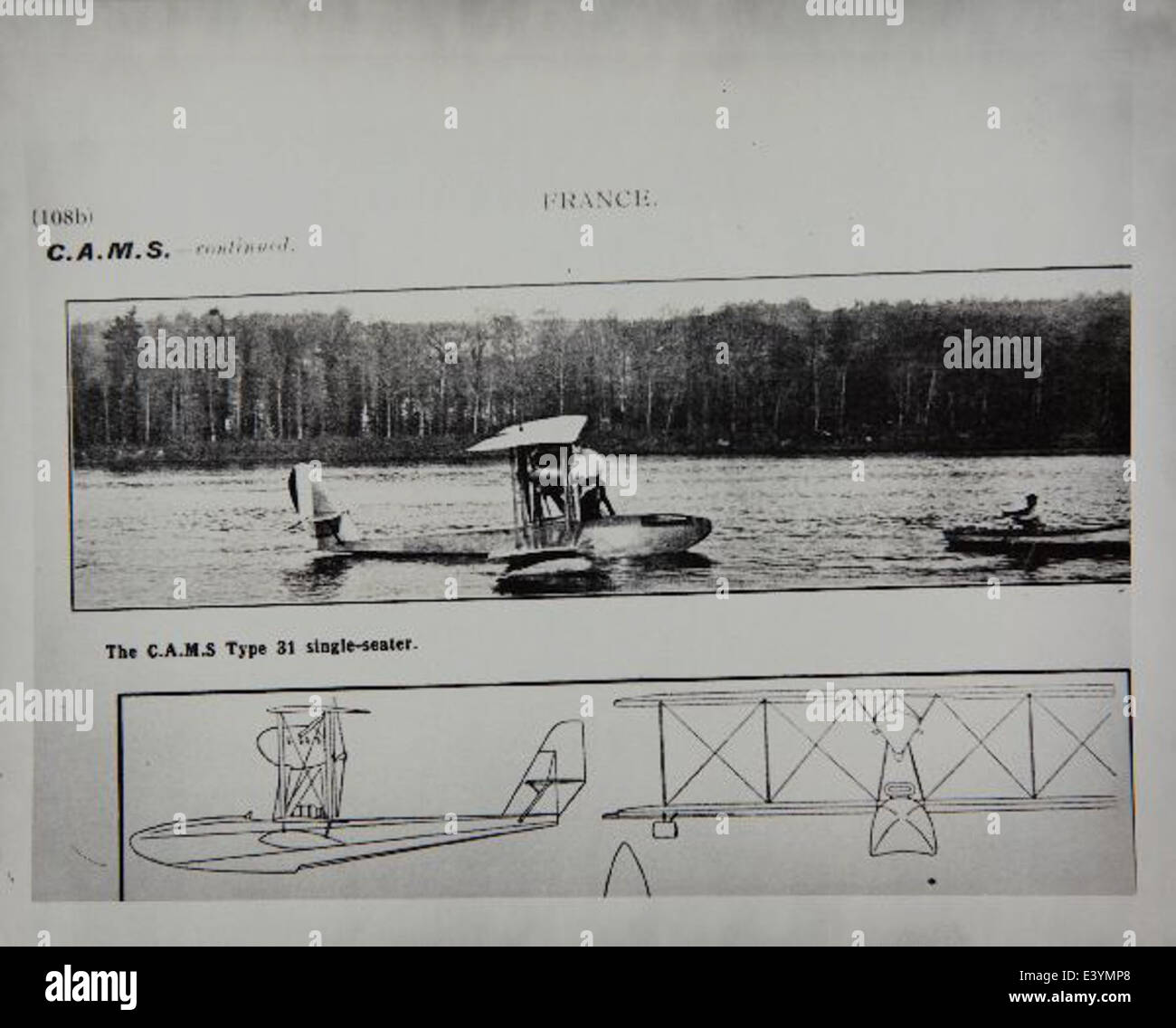CAMS 31
The CAMS 31 was tentatively designed as a flying boat in the 1920s, single-seat biplane fighter which of Chantiers Aero -Maritimes de la Seine (short: CAMS ) was built in France.
Design and development
The CAMS 31 was built entirely of wood biplane. The flying boat hull was stabilized by two swimmers who were laterally mounted below the lower wings. The single-seat biplane with an open cockpit in front of the lower wing was powered by an eight-cylinder Hispano -Suiza 8Fb piston engine of the drive Four Leaf pusher propeller via a gearbox. The engine nacelle was mounted in the upper part of the wing and are supported by struts to the hull.
The armament consisted of two fixed to the hull -mounted Vickers machine guns with a rate of fire of 450-600 rounds per minute.
The CAMS -31 prototype was later referred to as Type 22 and first flew in 1922. A second prototype called CAMS 31 Type 23 had its first flight in 1923. With version 23, the wing span was reduced and the wing chord, however, increased, the same wing area as the Type 22 was found. The type designation 22 and 23 referred to the development year.
Although the test flights showed a good handling of the machine, however, was not suitable as a fighter in the flying boat design. Series production was not operated.
Made afterwards, a single-seat air mail version which was called CAMS 31P and was based on the Type 22. The exact number of post- release is not known.
Variants
- CAMS 31 Type 22, original wing
- CAMS 31 Type 23, modified wings
- CAMS 31P, post flying boat with surfaces of type 22
Data ( CAMS 31 Type 22)
- Crew: 1 pilot
- Length: 8.80 m
- Wingspan: 11.20 m
- Height: 3.05 m
- Wing area: 33,00 m²
- Empty weight: 1045 kg
- Maximum takeoff weight: 1505 kg
- Powerplant: 1 × Hispano -Suiza 8Fb series piston engine, 220 kW (300 hp ) four-bladed pusher propeller
- Maximum speed: 200 km / h at sea level
- Range: 400 km
- Armor: two permanently mounted Vickers machine guns









